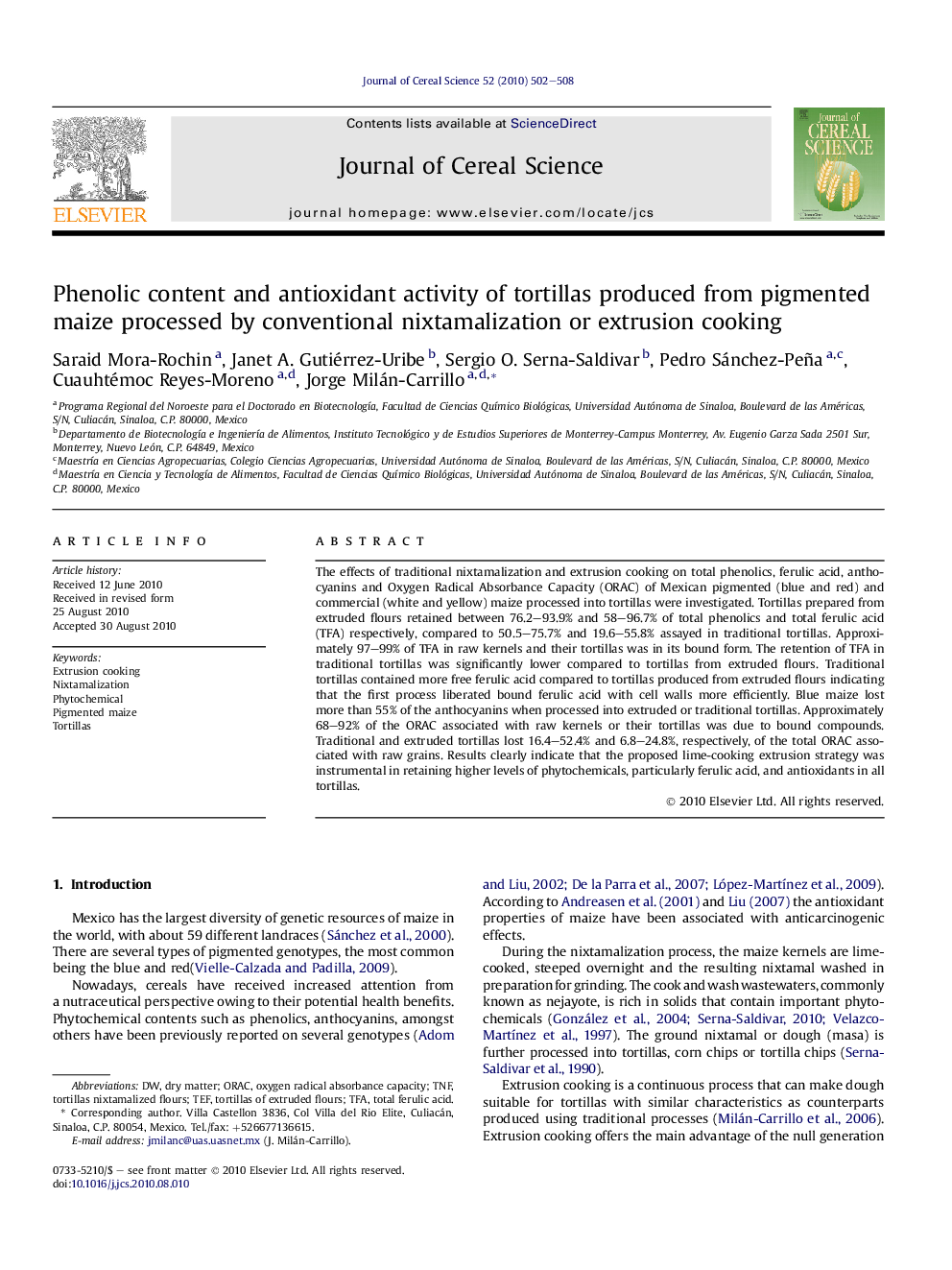| کد مقاله | کد نشریه | سال انتشار | مقاله انگلیسی | نسخه تمام متن |
|---|---|---|---|---|
| 4516331 | 1322353 | 2010 | 7 صفحه PDF | دانلود رایگان |

The effects of traditional nixtamalization and extrusion cooking on total phenolics, ferulic acid, anthocyanins and Oxygen Radical Absorbance Capacity (ORAC) of Mexican pigmented (blue and red) and commercial (white and yellow) maize processed into tortillas were investigated. Tortillas prepared from extruded flours retained between 76.2–93.9% and 58–96.7% of total phenolics and total ferulic acid (TFA) respectively, compared to 50.5–75.7% and 19.6–55.8% assayed in traditional tortillas. Approximately 97–99% of TFA in raw kernels and their tortillas was in its bound form. The retention of TFA in traditional tortillas was significantly lower compared to tortillas from extruded flours. Traditional tortillas contained more free ferulic acid compared to tortillas produced from extruded flours indicating that the first process liberated bound ferulic acid with cell walls more efficiently. Blue maize lost more than 55% of the anthocyanins when processed into extruded or traditional tortillas. Approximately 68–92% of the ORAC associated with raw kernels or their tortillas was due to bound compounds. Traditional and extruded tortillas lost 16.4–52.4% and 6.8–24.8%, respectively, of the total ORAC associated with raw grains. Results clearly indicate that the proposed lime-cooking extrusion strategy was instrumental in retaining higher levels of phytochemicals, particularly ferulic acid, and antioxidants in all tortillas.
Journal: Journal of Cereal Science - Volume 52, Issue 3, November 2010, Pages 502–508